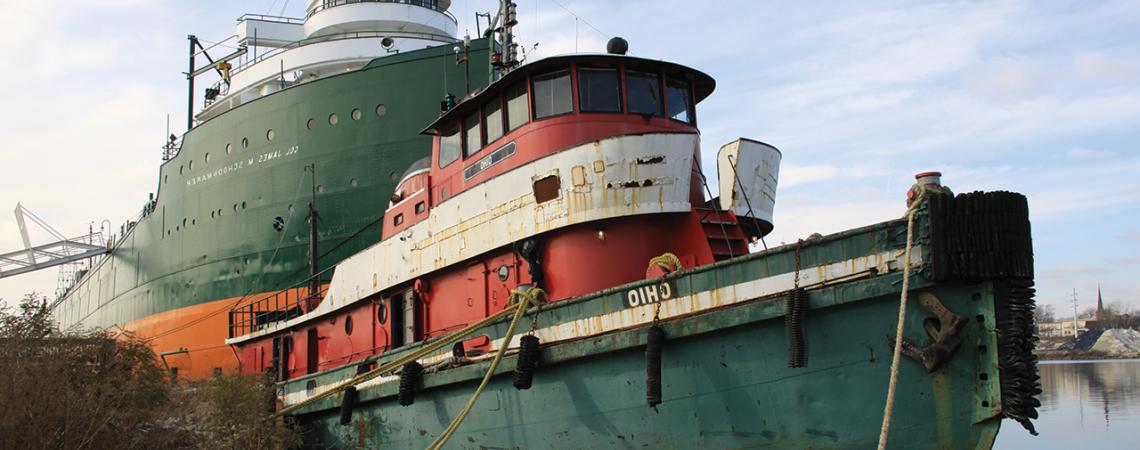Photo by Chip Gross
It was more than 60 years ago, and I was just 6 years old, rubbernecking from the back seat of my parents’ red-and-white 1950s-era Ford Fairlane. As we neared our destination, my father remarked into the rearview mirror, “We should be able to see it soon…”
We crested a hill, and I caught my first glimpse.
On that perfect summer day, the shimmering blue-green water before me shone as thousands of laser points. But it was not the sparkle that impressed me — I had seen light dance on water before. Rather, it was the sheer size of the lake itself, a vastness that I had no idea existed. Not only did water stretch as far as I could see from east to west, it also ran all the way to the northern horizon and disappeared!
That first glimpse of Lake Erie — my first of any of the Great Lakes — thrilled me back then as it does today. Each time I see big water, something in my gut twinges, tightens.
I, like millions of others, am somehow inexplicably drawn to the Five Sisters.
You’ll experience a similar sense of awe while visiting the National Museum of the Great Lakes in Toledo. “Our mission is simple,” says John McCarty, chief operating officer. “It’s to preserve and make known the history of the Great Lakes.”
On display are more than 500 historical photographs, 250 artifacts, and 45 state-of-the-art interactive exhibits. A good way to begin a tour is by viewing the seven-minute introductory film, The Great Lakes: A Powerful Force, in the museum’s theater. Chronicling the history of the lakes over hundreds of years, the movie explains their ongoing role in America’s economy and as a perennial playground for millions of people.
The museum is sectioned into five galleries: Maritime Technology, Exploration & Settlement, Expansion & Industry, Safeguard & Support, and Shipwrecks & Safety. It’s that last category that seems to hold the greatest intrigue for most people.
“The Great Lakes have experienced more than 8,000 shipwrecks throughout the years, more per surface square mile than any other body of water on earth, and resulting in countless lives lost,” says McCarty.
The most dangerous time of year is fall, when giant autumnal air masses from the north and south collide over the lakes, creating their own weather — at times even producing hurricane-force winds. Freshwater mariners have a term for such violent storms: “The Witch of November.”
It was just such a storm on Lake Superior in November 1975 that took down the 729-foot freighter Edmund Fitzgerald and its entire 29-man crew. An interactive video-display terminal at the museum allows visitors to guide a submersible to the remains of the wreck and view it from various angles.
The museum building itself is not large — just 11,000 square feet — but not all of the museum is indoors.
Just a few steps from the main entrance, docked along the southeast bank of the Maumee River, is the Col. James M. Schoonmaker, a 617-foot ore freighter first launched into the Detroit River in 1911. At the time, it was the largest and most elegant ship operating on the Great Lakes. A century later, it was moved to her now-permanent berth to become a museum ship.
This year, the Schoonmaker is joined by a second boat, the 106-foot tug Ohio. Built in 1903, the Ohio started service on the lakes as a fire tug for the Milwaukee Fire Department. In the early 1950s, it began making long hauls across the lakes towing various vessels, as well as engaging in ice-breaking and salvage operations.
Although the National Museum of the Great Lakes is open year-round, the Schoonmaker and Ohio may only be boarded for tours May through October. A museum brochure suggests wearing “sensible” shoes.
W.H. “Chip” Gross is a member of Consolidated Cooperative and is Ohio Cooperative Living‘s outdoors editor.









